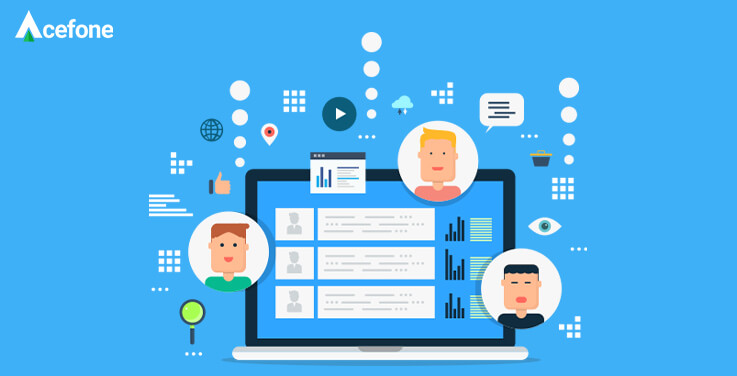The world runs on numbers. That’s why it comes as no surprise that customer experience has also become largely data-driven. Rising user expectations demand more than just routine conversations from contact centers—businesses are under pressure to proactively gauge consumer needs and interests.
To achieve this, you need to gather sufficient data about the target audience. However, people do not relish filling long forms; and don’t like sharing their private information for the fear of misuse and security breaches.
To bridge this gap, you need to build a strong sense of trust with your clientele. Focus on developing customer-centric services. You must deliver true value to your users through their information, rather than simply using it to target them as prospects.
According to a survey conducted by Econsultancy and Adobe, 65% of the respondents agreed that improved customer data analysis helped them better understand user needs and was key to deliver exceptional customer service.
Let’s explore a few effective tips that help businesses proactively utilise customer details.
1. Use the available data to benefit customers
Collecting user information is an important process for any business. We can’t deny that a large portion of target audience data remains unused. Stakeholders need to appropriately utilise this information to help their customers.
Let’s take an example. Imagine you’re a company selling car insurance. Usually, collected information is used to target best-suited prospects—an approach called product-centricity. Instead, if you focus on creating awareness about the importance of safe driving, you become customer-centric. This helps build credibility and establish a trusted relationship with consumers.
Data derived from client interactions are an important source for building buyer personas. Once you have a better idea of these profiles, you can accordingly make changes in your offerings. AI-based algorithms empower you to align your operations to user preferences.
2. Deliver value to customers throughout the sales life cycle
This step needs a major shift in focus. Adopt a broader perspective; don’t just focus on targeting people for sales. Your product needs to be valuable in the longer-term, and your support should extend beyond the sales stage.
Imagine this: You run a supermarket. A customer comes in to buy chicken, cilantro and yoghurt. Delivering true value means more than a seamless shopping experience—go the extra mile and offer personalised cooking suggestions for the products. For example, if you offer a recipe that involves leftovers of the purchased products, you’ll create a lasting impression.
3. Redefine personalisation
Earlier, our idea of personal touch was limited to emails or newsletters with the client’s name and address. However, the current competitive scenario demands much more. It’s no longer enough to save your customer’s name and phone number in your CRM.
Today, personalisation means catering to individual consumer needs. You may have a wide target audience with varying interests, all of which need to be satisfied.
For example, a buyer may require different products in different seasons. Your information bank needs to proactively identify changing trends, and modify production and supply accordingly.
A 2018 survey by Evergage showed that the top benefits of brand personalisation include improved visitor engagement (55%), better customer experience (55%), a higher rate of conversions (51%), and elevated lead generation (46%).
Brand evolution must be in tandem with changing consumer preferences. This gives you a competitive edge while also winning clients’ hearts.
4. Keep modifying operations
We’ve already established that it’s imperative to adapt to shifting buyer needs. These changes not only impact your output but also change your internal operations. Use customer details to reassess business procedures and deliver tailored experiences.
5. Make privacy a priority
Considering how data-driven the world is, it’s only natural that privacy concerns are on the rise. With cases of misuse becoming rampant, it is essential to adopt privacy policies that guarantee the safeguarding of critical consumer data. This includes maintaining regulatory compliance and high-end security practices.
Privacy controls should be an integral part of your design and IT systems, network infrastructure, and business workflows. Following these practices stringently will help you win client confidence, and encourage them to share information unhesitatingly.
Parting thoughts
Properly utilising customer information to deliver valuable experiences is as important as collecting data for sales. The mammoth task of safeguarding sensitive details lies with businesses, with the added responsibility of using it holistically. People are willing to share their details only when they feel it’s beneficial to do so.
Hopefully, this article has provided a peek into the different ways client data can be used to offer greater value. Learn more by contacting our sales team at 1888-859-0450 anytime!














